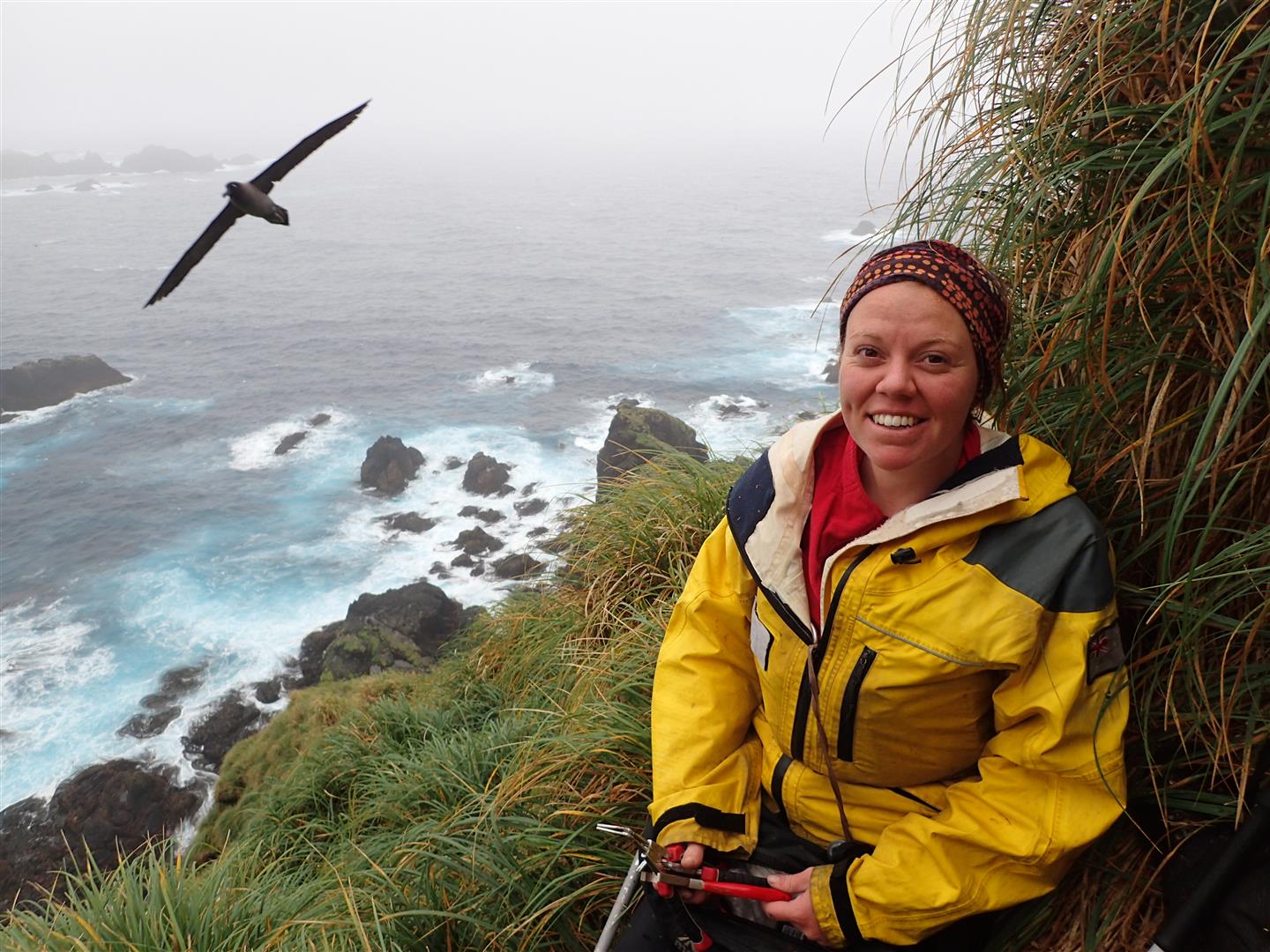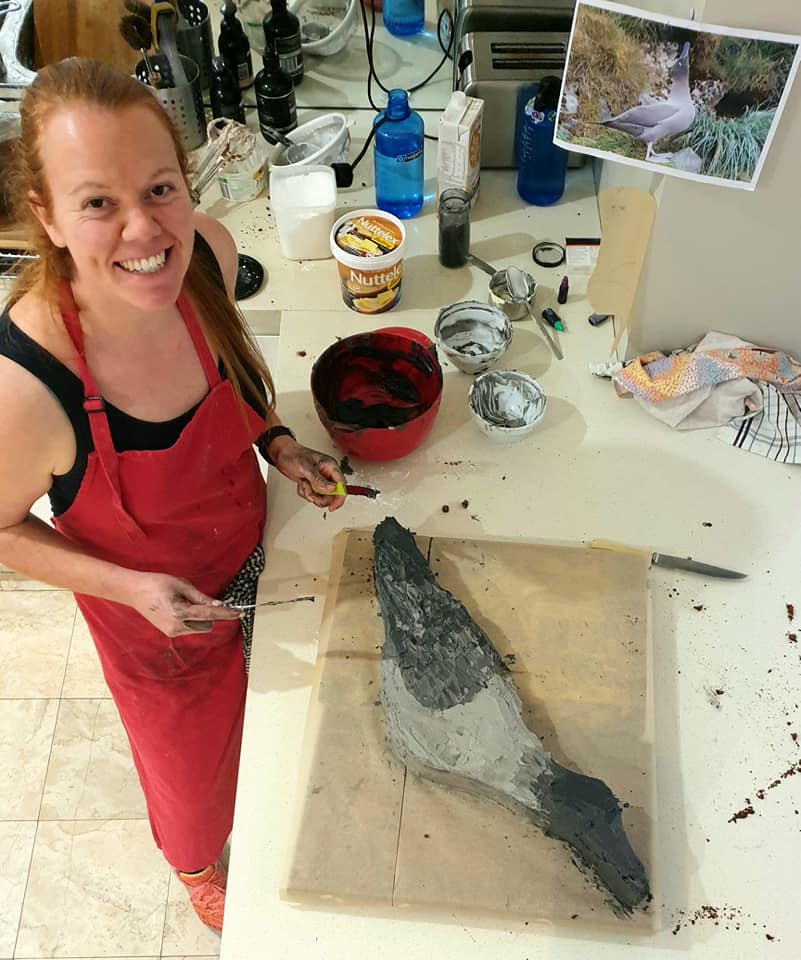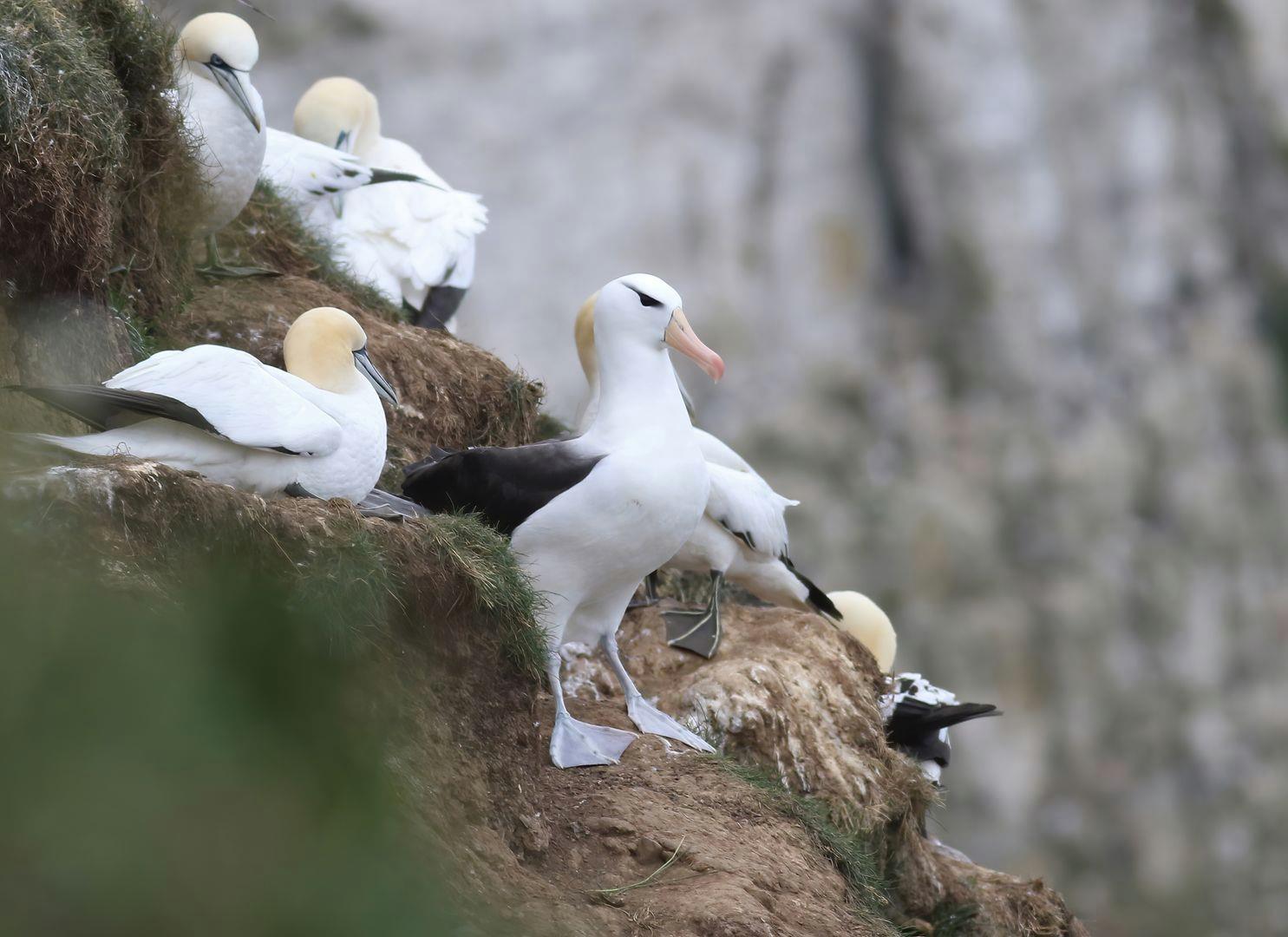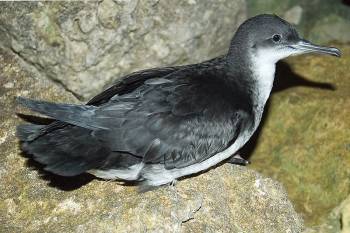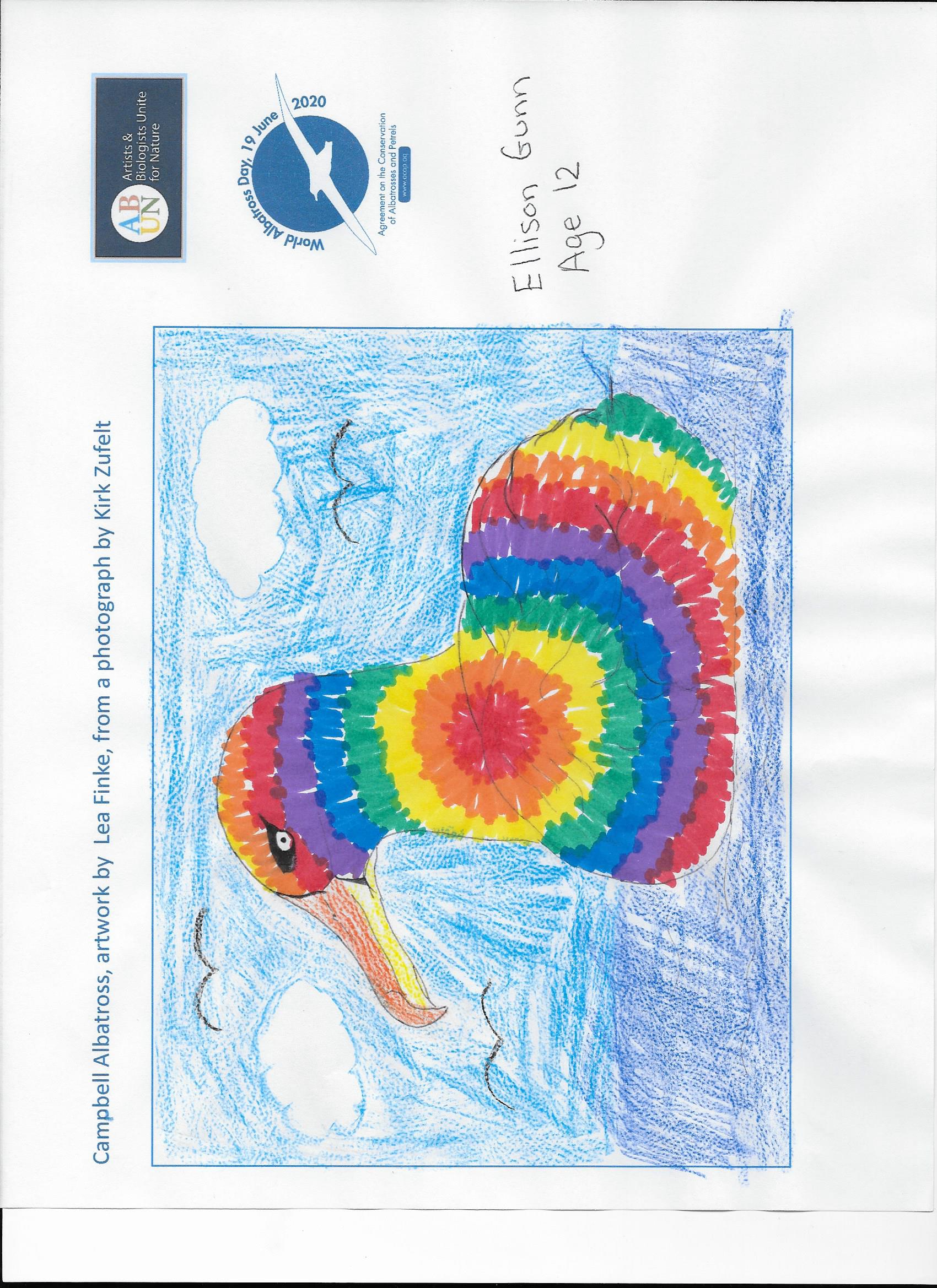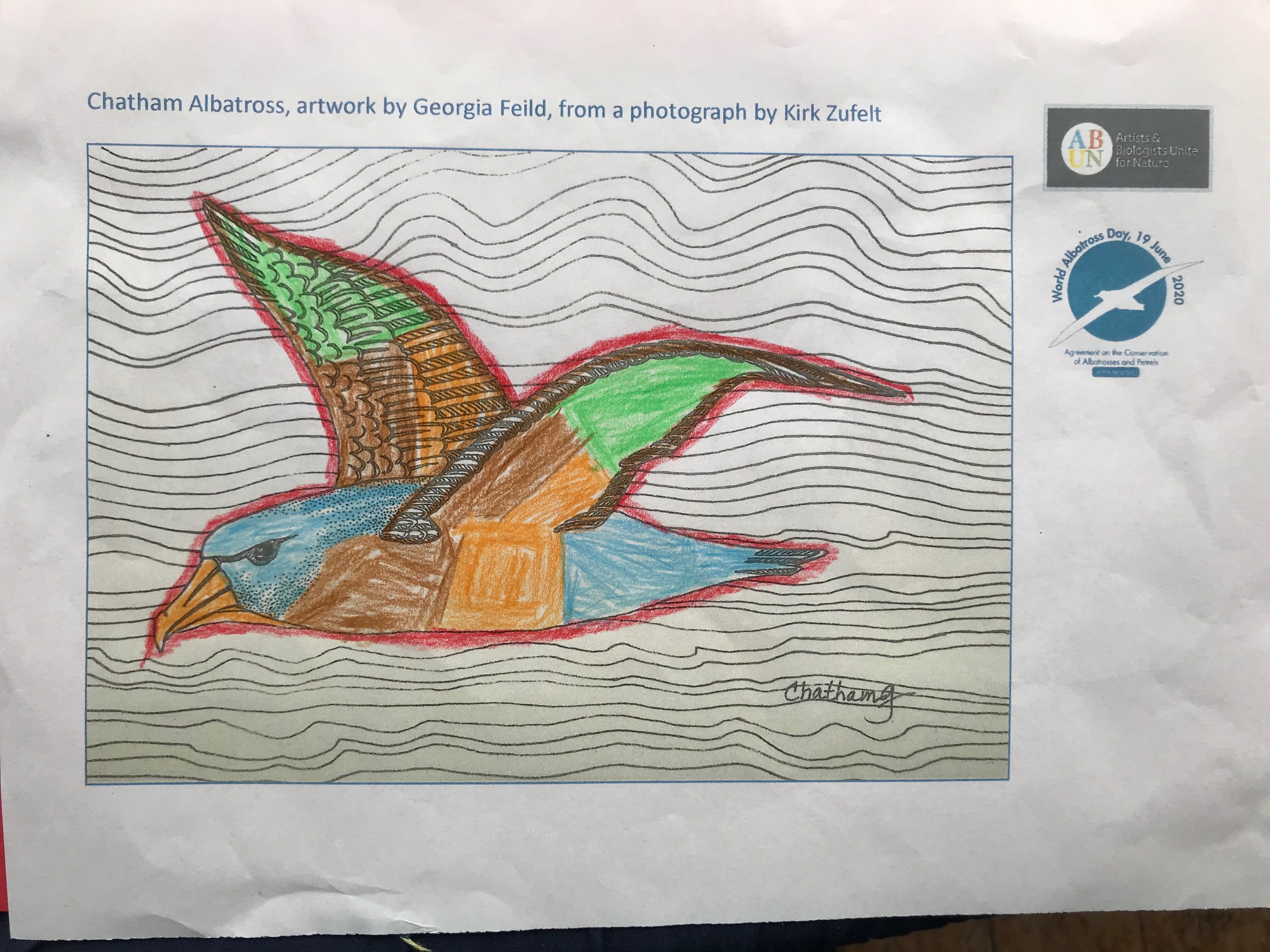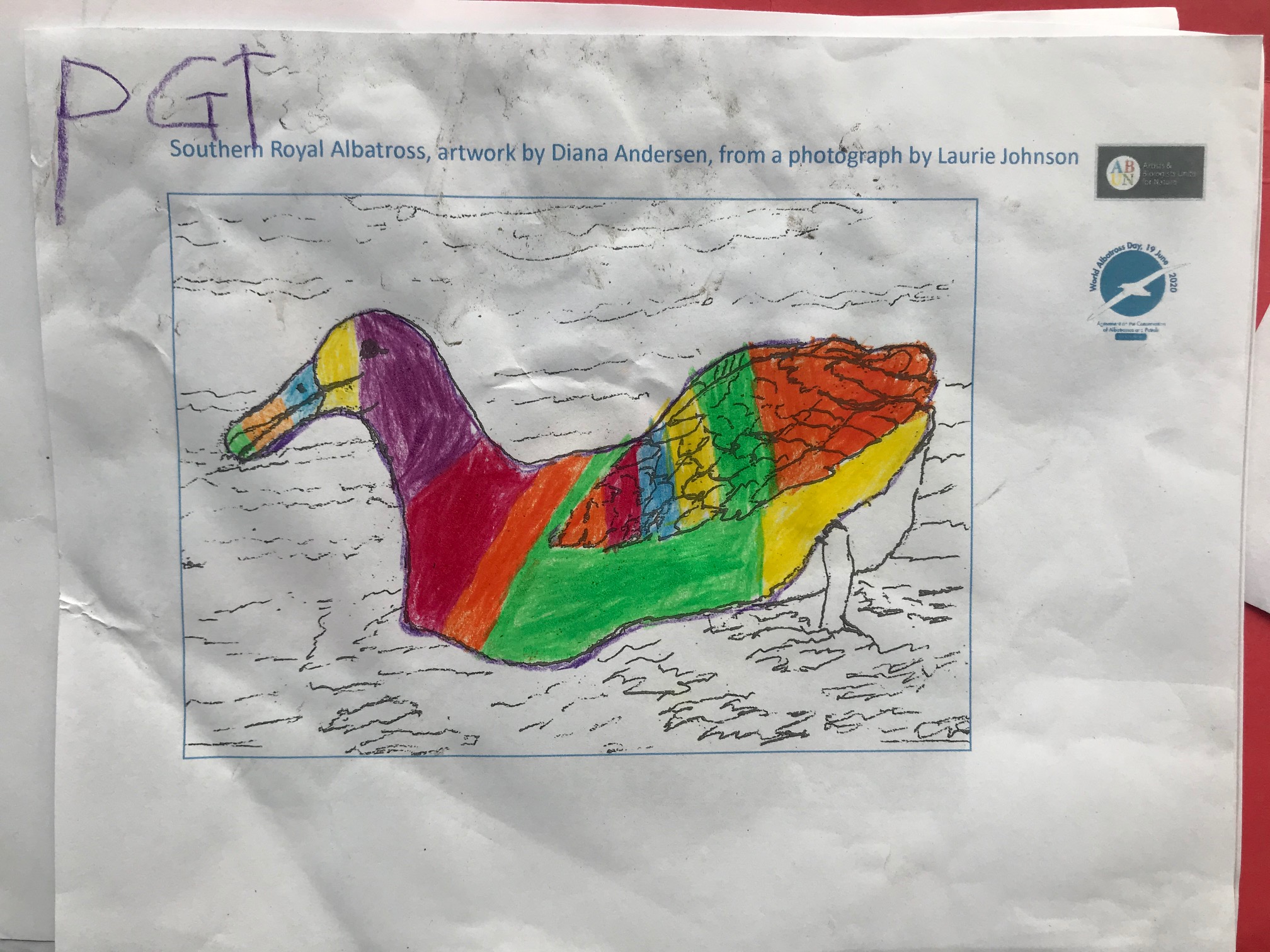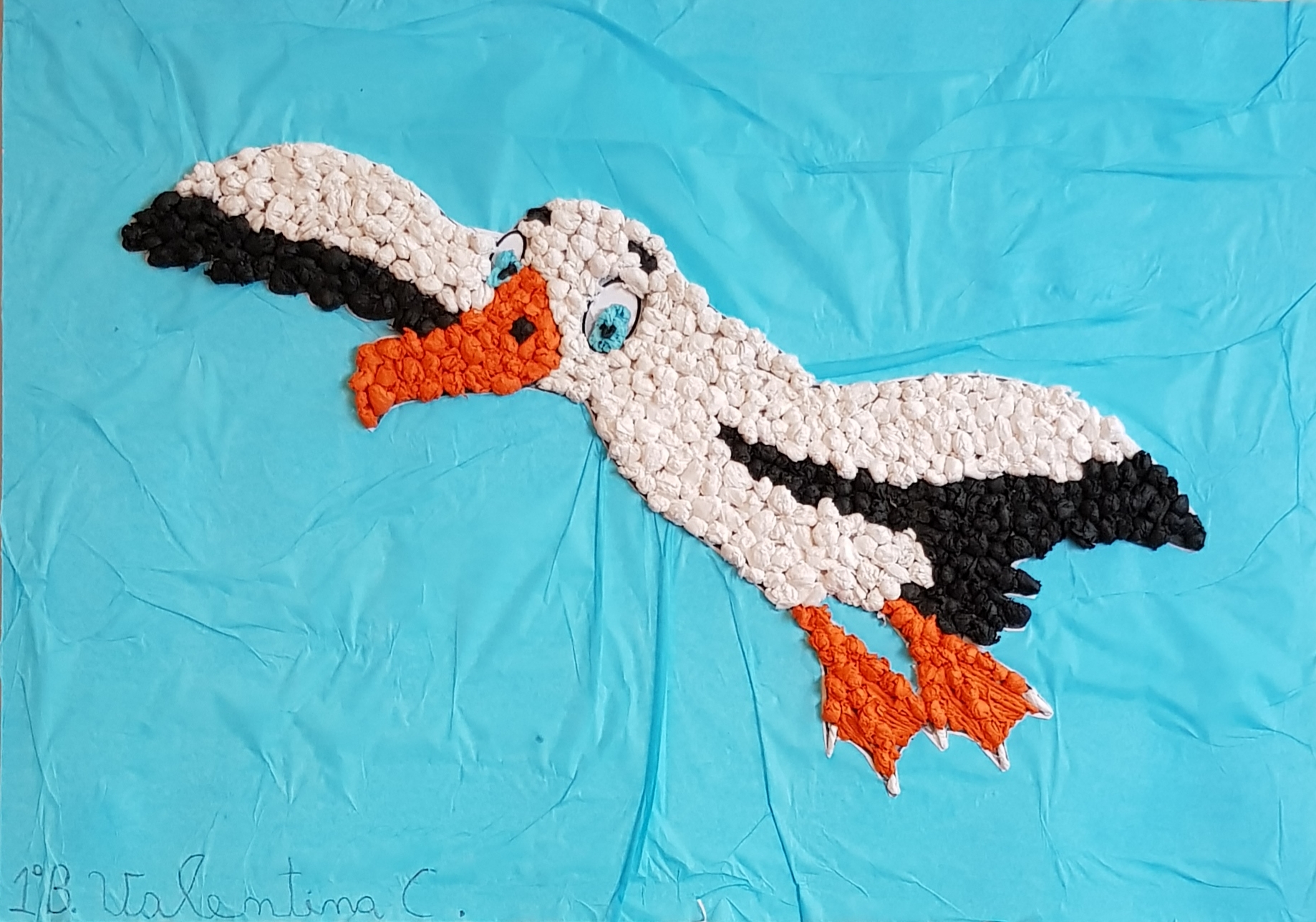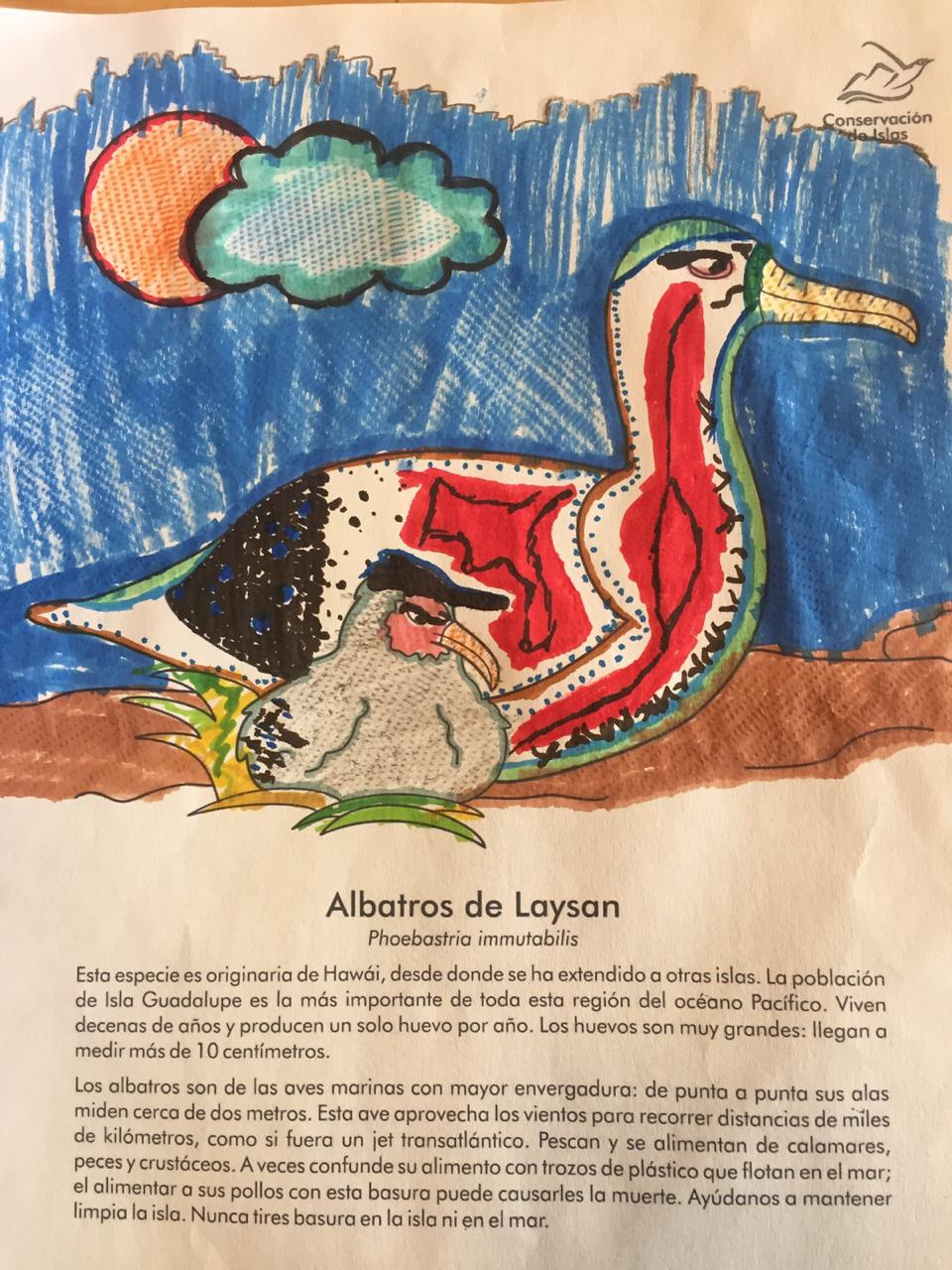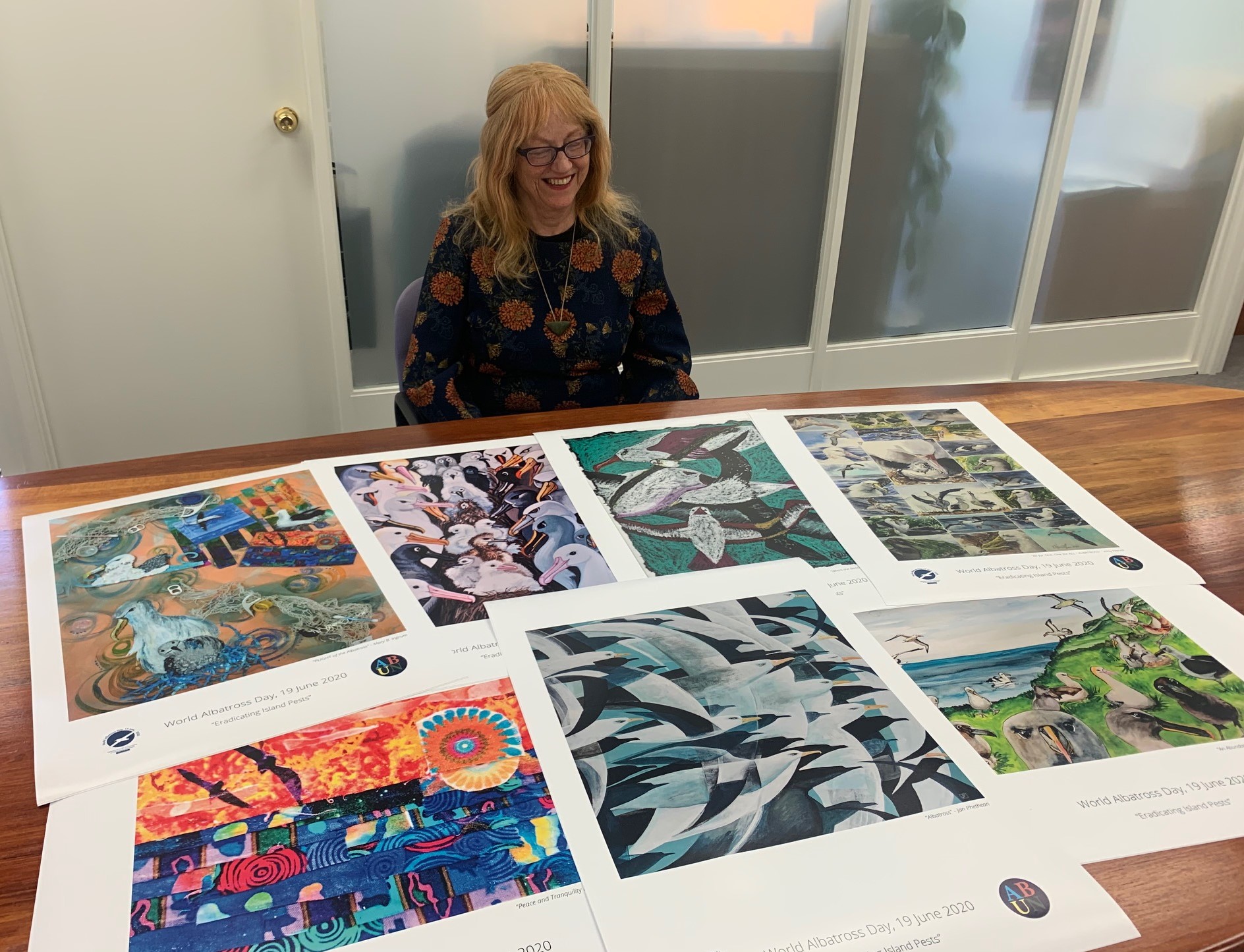
Christine Bogle in the ACAP Secretariat offices in Hobart admiring World Albatross Day posters by Artists & Biologists Unite for Nature
ACAP Executive Secretary Christine Bogle has been keeping up her Spanish – an ACAP official language – in conversations with Hobart-based teacher, Florencia Hancock, who is from Argentina. On Sunday the 16th of August Christine will be interviewed for an hour in Spanish on community radio Hobart FM by Florencia, with the Agreement as the subject.
“Hobart FM's broadcasts are at once eclectic and broad ranging. Briefly, the station aims to cater for the information and entertainment needs of those not catered for by mainstream radio in Hobart. From classical to blues, from country to easy listening and nostalgia, there is a large array of music styles represented across the program schedule, with special attention given to local performances and ethnic language broadcasts. Hobart FM enables the voices of individuals and minority groups to be heard throughout the greater Hobart area.”
ACAP’s friends in Latin America and in Spain are invited to listen in to Christine’s interview. Go to the website at 10h00 AEST (GMT/UTC + 10h) this Sunday and click on “Listen Now”’.

Christine Bogle, la Secretaria Ejécutiva del ACAP, sigue manteniendo su español, un idioma oficial del ACAP, en conversaciones con la profesora de español, Florencia Hancock. Florencia es de Argentina y vive en Hobart. El domingo 16 de agosto Christine será entrevistada durante una hora en español en la radio comunitaria Hobart FM por Florencia, con el Acuerdo como tema.
Los amigos de ACAP en América Latina y en España están invitados a escuchar la entrevista de Christine. Vayan al sitio web a las 10h00 AEST (GMT/UTC + 10h) este domingo y hagan clic en "Listen Now”.
John Cooper, ACAP Information Officer, 12 August 2020

 English
English  Français
Français  Español
Español 